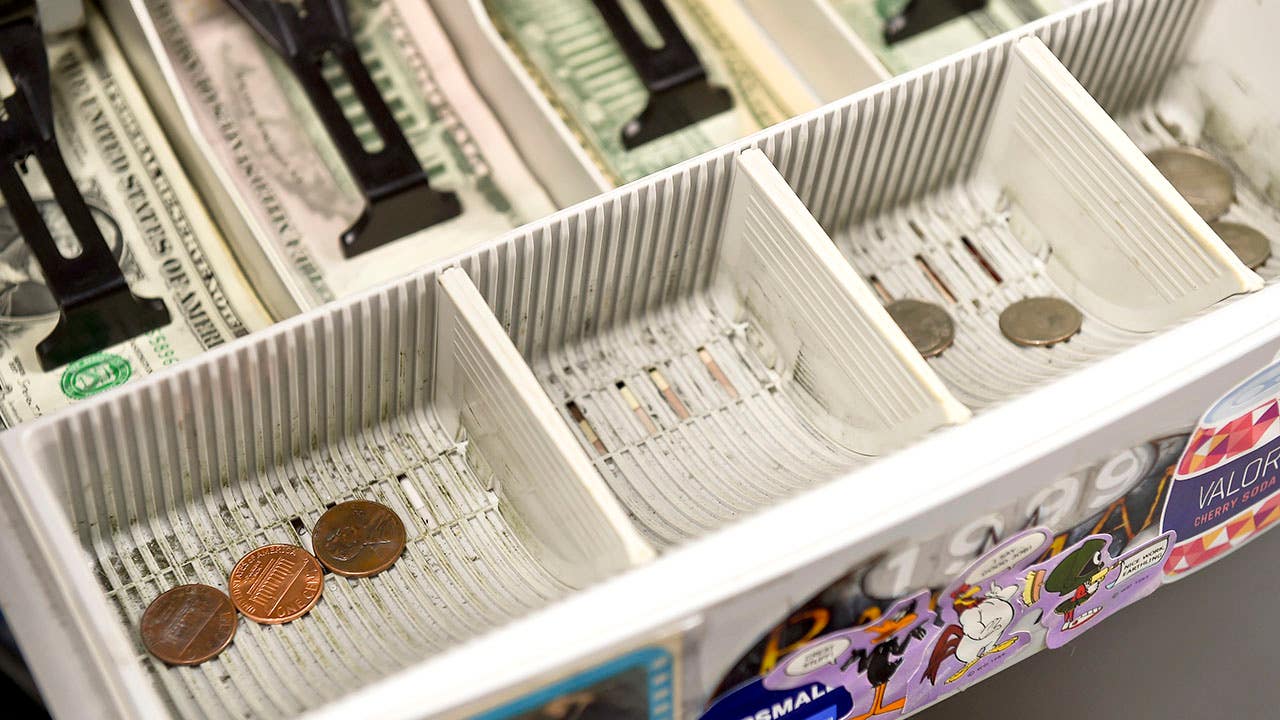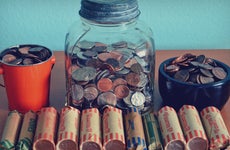The coin shortage isn’t over yet

The Bankrate promise
At Bankrate we strive to help you make smarter financial decisions. While we adhere to strict , this post may contain references to products from our partners. Here's an explanation for . The content on this page is accurate as of the posting date; however, some of the offers mentioned may have expired. Terms apply to the offers listed on this page. Any opinions, analyses, reviews or recommendations expressed in this article are those of the author’s alone, and have not been reviewed, approved or otherwise endorsed by any card issuer.
In the summer of 2020, coins were hard to find at American businesses. Paying with cash often led to trouble receiving the correct change. It was also a struggle for anyone needing coins for laundromats, parking meters and other traditionally coin-centric businesses.
Walmart, The Home Depot and Kroger were among the many retailers that asked customers to pay with cards or exact change whenever possible. Kroger went further than most, rounding all cash purchases up to the next dollar and letting shoppers decide whether they wanted the extra funds loaded onto their store loyalty card or donated to charity.
The shortage has improved, but it’s still an issue
A year and a half later, the coin shortage has mostly faded from the headlines, but it hasn’t completely gone away. Last month, I witnessed a dispute between a shopper and a cashier in a Safeway supermarket in Pacific Grove, California. The cash-paying customer was owed 90 cents in change, but the cashier didn’t have any. She asked him if he had another 10 cents, in which case she could give him a dollar bill.
“I’m not giving you 10 more cents; you already have my 90 cents!” the shopper fumed.
He wanted the dollar bill anyway, but the cashier said she would get in trouble for leaving her register 10 cents in arrears. They went back-and-forth for a bit, and the customer eventually left without his 90 cents.
The situation probably could have been handled better on both sides, but more than anything, it opened my eyes to the fact that the coin shortage isn’t over yet. My father-in-law lives in the area, and he confirmed that many local businesses are running short on coins. There are similar stories coming out of North Carolina, Texas and elsewhere in California.
What caused the coin shortage?
Due to the COVID-19 pandemic, the U.S. Mint slowed coin production from March 2020 to June 2020 to reduce employee exposure to the virus. The mint directly contributes 17 percent of the coins that circulate through the economy. Worse, the movement of existing coins slowed to a crawl.
Many businesses were closed in the spring and summer of 2020 because of virus fears and government restrictions. Even among stores that remained open, in-person retail activity dropped dramatically, and many shoppers opted for credit and debit cards because they were generally viewed as less germy than handling cash. “With the partial closure of the economy, the flow of funds through the economy has stopped,” Federal Reserve Chairman Jerome Powell told the House Financial Services Committee in June 2020.
Okay, but why is there still a coin shortage?
That’s a very good question. The U.S. Mint resumed operating at typical capacity in June 2020, and the Federal Reserve assembled a cross-industry task force to address the coin shortage in July 2020. Those moves were supposed to bring a swift end to the problem. But, as with just about everything else related to COVID, the resolution is taking longer than we initially expected. This is yet another example of how kinks in the supply chain are causing ripple effects throughout the economy.
Officials continue to insist that the coin shortage is more of an imbalance than a true shortage. America has enough coins, the theory goes, they’re just not moving through the economy quickly enough. The task force’s primary recommendation has been to raise awareness of the issue and encourage people to either spend the coins that are sitting idly in their homes or deposit them at a bank.
Some businesses have offered related promotions. For instance, some 7-Eleven stores have given a free Slurpee to anyone who exchanges $5 in coins for a $5 bill. Other retailers have requested exact change or recommended credit and debit card payments. Many stadiums have gone cashless, eliminating the need for change and promoting benefits such as better hygiene and faster service.
“Reverse ATMs” that load cash onto a prepaid debit card are often provided as a workaround for those who may not have a credit or debit card. The unbanked population has been shrinking, according to the FDIC. It comprised 5.4 percent of U.S. households at last check. It’s probably even lower now, since that study was conducted in 2019.
Cash usage has been trending down for years
Bills and coins were used in just 19 percent of all payments in October 2020, the Federal Reserve reported. Cash usage declined seven percentage points from the last pre-pandemic study in October 2019—a precipitous fall in just one year, considering Americans’ payment habits usually evolve slowly. Debit cards (28 percent) narrowly edged credit cards (27 percent) for the top spot.
Ironically, New York City, Philadelphia, San Francisco and New Jersey all enacted laws soon before the pandemic to protect consumers’ rights to pay with cash, effectively banning cashless establishments (there’s a similar, much older, law in Massachusetts). The intent was to support unbanked individuals, but then the pandemic brought up a much different set of concerns.
During the COVID crisis, many people have been afraid that they can contract the virus by touching contaminated objects, potentially including cash. Experts have largely downplayed those fears and the University of Texas actually found that credit cards harbored more types of bacteria than bills and coins (although researchers stressed the threat to public health is very low). Nonetheless, there’s a perception that cash is dirty.
The bottom line
I’m a big fan of using my credit cards as widely as possible, since I earn cash back on every transaction and I avoid interest by paying in full each month. Credit cards also offer superior fraud protections and additional perks ranging from extended warranty coverage to purchase protection, airport lounge access and more.
That said, I understand why some people prefer cash for various reasons (including personal preference, avoiding the possibility of debt, because they can’t qualify for credit and so on). It’s unfortunate that the coin shortage is persisting. The resolution is largely out of our individual control, but as a group, we can make a difference.
If you use cash a lot, it’s probably in your best interest to stockpile coins if you can. The rest of us can help by putting our coins into action. Consider depositing your change at a financial institution or spending it at a local store.
Have a question about credit cards? E-mail me at ted.rossman@bankrate.com and I’d be happy to help.
Related Articles

Americans are tipping less, despite growing requests for gratuities


The coin conundrum: Why coins are still scarce and how it affects consumers
